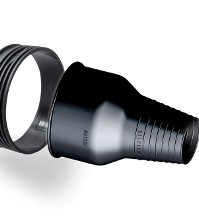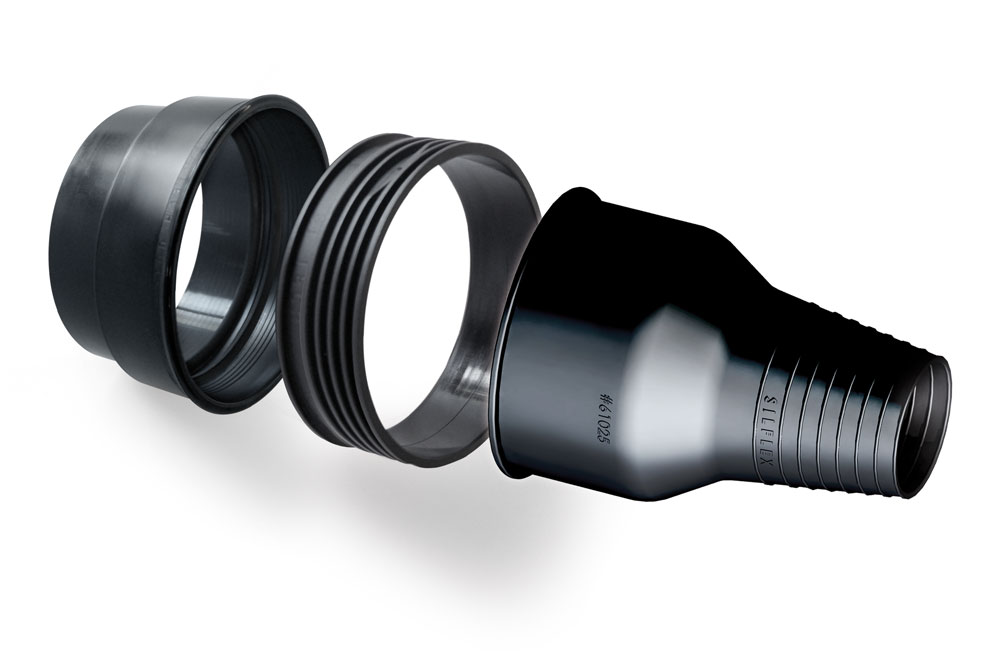Even with a waterproof zipper and fully waterproof material, drysuits do have weaknesses. One of the biggest is that a hole anywhere in the system creates a leak, which is uncomfortable at best and problematic at worst. A drysuit filled with cold water is not only heavy, making an ascent difficult, but it also chills you rapidly. And the weak spots on a drysuit are definitely the cuffs.
Whereas the suit itself is made from either a compressed neoprene or a laminated rubber — both of which are quite durable — the cuffs must be made from a fairly soft, stretchy material. And soft, stretchy materials, all other things being equal, are weaker. Traditionally, the cuffs have been glued onto the suit to ensure that they’re waterproof. This has made them somewhat cumbersome to change, requiring some use of tools.
Because of this, replacing a drysuit cuff is not something you can easily do at the dive site or on the dive boat, especially not if the neck cuff is leaking. It’s best to take a workshop or course to learn how to change a broken cuff, but unfortunately, they do tend to break at dive sites. A distressed cuff may seem fine based on all but the most meticulous inspection, but when you try to push your head or hands through it — however gingerly — a hidden weak spot becomes an all-too-visible hole. And, unless you have a backup drysuit with you, that probably spells the end of that dive day before it has even begun.
Swedish dive gear producer SiTech is looking to fix this problem. With their quickly interchangeable systems for both wrist and neck cuffs, changing one could take a matter of minutes, and you could do so without any gear aside from a spare cuff.
The wrist cuffs are essentially the same as those they use for their Quick Dry Glove system, wherein mounts are placed on the drysuit sleeve and the dry glove or cuff, respectively. Changing the wrist cuff becomes simply a matter of removing the cuff mount from the broken cuff and placing it on a new one, or on a drysuit glove, if that is available.
The real novelty appears with the Neck Tite system for the neck cuffs. Unlike the Dry Glove system, this must be mounted in a shop, where a mounting ring is glued onto the the suit. After that, the diver can mount and interchange the cuff itself using a locking ring, similar to the Dry Glove system. The cuff is adjusted into place using a supplied tool that looks very much like a pizza cutter. This allows the diver to quickly switch a cuff, if it breaks, or to switch between silicone and latex cuffs. It even allows divers to switch cuffs on rental drysuits to accommodate various neck and wrist sizes.
Wrap-up

Siliflex Drysuit Cuffs
No costly repairs or visit to a dive shop
Switching cuffs can be done on the dive site
Mounting systems can be a bit cumbersome; practice definitely helps
Must be purchased as optional extras
Neck Tite system must be mounted by a technician
The system is easy to use, but can feel a bit cumbersome the first few times you use it. I’d recommend doing a practice run — dare I say a dry run? — so you don’t find yourself changing a cuff for the first time on a rocking dive boat in the middle of the ocean. All in all, the systems deliver what they promise, enabling divers to change broken drysuit cuffs without going to a dive shop or calling the day’s diving.


